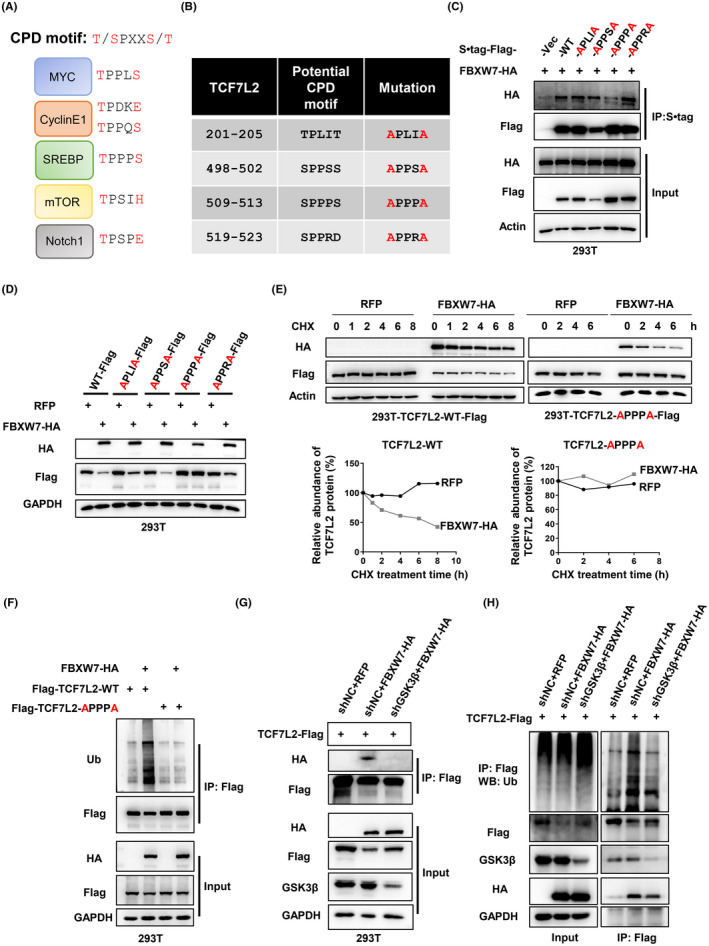FIGURE 5.

Identification of the Cdc4 phosphodegron (CPD) motif in transcription factor 7‐like 2 (TCF7L2). (A) CPD motifs in known FBXW7 substrates. (B) Potential CPD motifs in TCF7L2 and intended mutations. (C) Immunoprecipitation of S•tag‐Flag‐TCF7L2 (full length and various CPD mutants) expressed in HEK293T cells followed by western blot analysis. (D) Western blot analysis to examine the expression levels of TCF7L2 with potential CPD motifs mutated under FBXW7 overexpression. (E) Overexpression of FBXW7 could shorten the half‐life of WT TCF7L2, but not the half‐life of TCF7L2‐APPPA. The cells were treated with cycloheximide (CHX, 100 μg/ml) for different times. Protein band intensities were measured and plotted. (F) Ubiquitination assay. Flag‐tagged TCF7L2 or TCF7L2‐APPPA was coexpressed with FBXW7‐HA, immunoprecipitated, and blotted for ubiquitin. The coexpressions in HEK293T cells were realized through lentiviral infection and the cells were treated with MG132 (10 μM) for 8 h before sample collection. (G) Glycogen synthase kinase‐3β (GSK3β) was required for the interaction between FBXW7 and TCF7L2. TCF7L2‐Flag and FBXW7‐HA were coexpressed in HEK293T cells depleted of GSK3β and their interaction was examined through immunoprecipitation and western blot analysis. (H) Ubiquitination of TCF7L2 by FBXW7 depends on GSK3β function. The ubiquitination assay was carried out as in (F)
